| Having recovered the camera and, very generously, been allowed to
stay on the drive at the B&B overnight, we had to retrace our steps the
following day back to Mono Lake. This was not so bad since we had not
travelled through Yosemite in this direction before so we had new views to
find. Like this shot of the Merced River. We descended from our lofty perch
to the river side then followed the valley into Yosemite. | 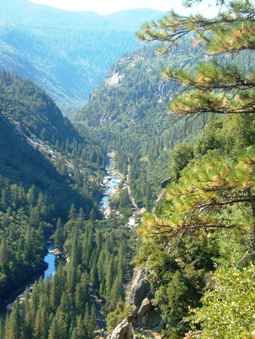 |
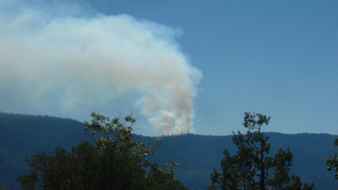 | Then we climbed back
out on the other side of the river, pausing to watch the smoke from the
controlled burn we had seen them preparing the previous evening.. |
| We did stop at Tuolomne Grove where there is a small stand of
giant sequoia trees. There are two stands in Yosemite, the other being at
Mariposa Grove which we visited last time we were here. Still awe-inspiring
but not quite as much as Kings Canyon had been. | 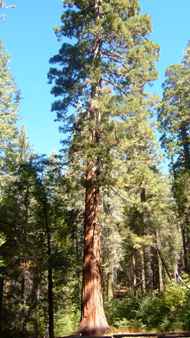 |
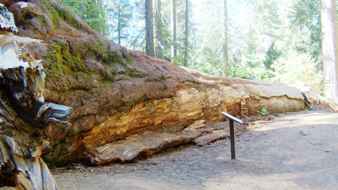 | They are as
impressive to me when they have fallen, particularly since they often
shatter under their own weight. They can weigh as much as 6000 tons
making them the largest living things on the planet (but not the oldest). |
| Another shot of a fallen tree showing just how massive the trunks
are in comparison to the significant sized trees around them.. | 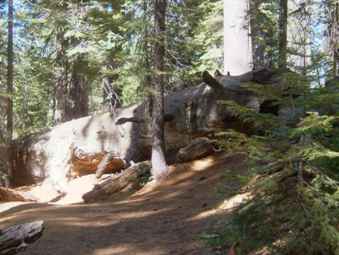 |
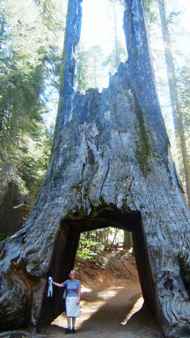 | In the 1880s people
were keen to create novelties which they could charge tourists to come and
see. This hole was cut through a tree big enough to drive a stagecoach
through. Inevitably it eventually killed the tree. |
| In order to really show a still living tree, you need to paste
three photos together and even then you would probably fail. The black
triangle at the foot of this tree is fire damage and it is twelve feet high.
The bark at this point is over a foot thick. In the early 1900s (to about
1960) fire was rigorously suppressed. Now the part fire plays in the
lifecycle of the forest is better understood. These trees need fire to
reproduce. | 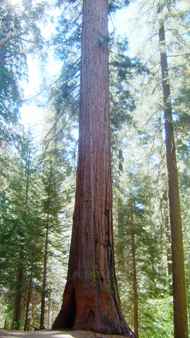 |
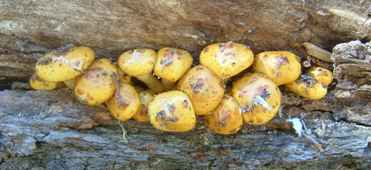 | But even in death
they are part of the ecosystem providing nutrients for these fungi. |
| But onward through the park heading east. The Tioga Pass at the
eastern entrance is almost at 10,000ft so there is quite some climbing to
do. The rock is actually pale grey, they haven't quite got snow here yet. | 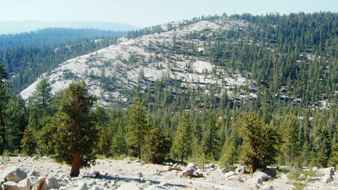 |
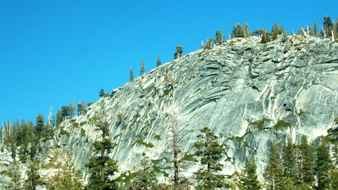 | But the rock shapes
are quite interesting having been formed millenia ago. |
| The bright sun makes it look like a snow scene but it is just the
angle of the sun and the sparse but tenacious trees at these high altitudes. | 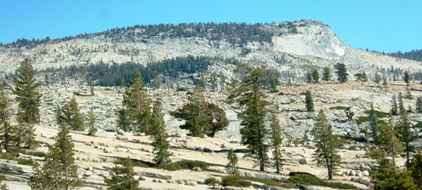 |
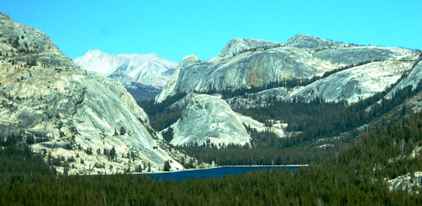 | There are lakes
along the way with a brilliant blue colouration. You would soon get blue too
- the water is freezing! |
| But it is very picturesque, and so still. When we came before in
August there were thousands of people here, now it is almost empty. Many of
the campsites are closed and snow will come within a few weeks, closing this
road for the winter season. | 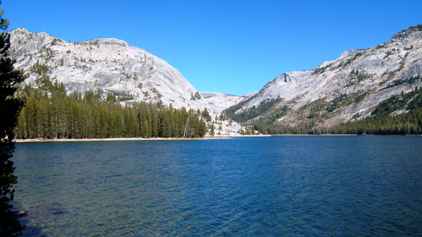 |
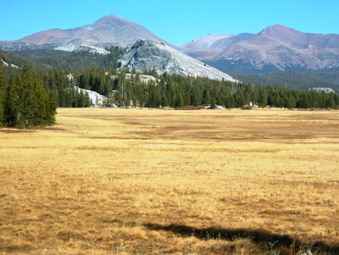 | This is Tuolomne
Meadows which is one of the main attractions in the season with a huge
campsite and visitor centre, both now closed. It will soon become a haunt of
elk as the humans disappear. |
| More lakes just as we reach Tioga Pass and before we start the
long drop down (about 5000ft). | 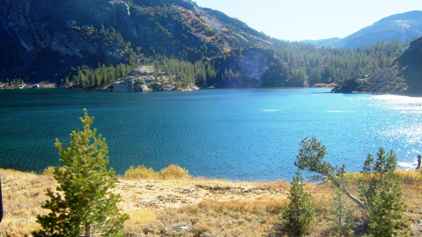 |
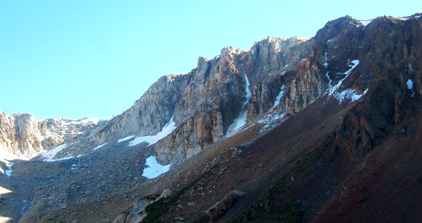 | By now it was
getting late in the afternoon which starts to bring out the shadows on the
cliff faces making them much more photogenic. |
| Jan took a lot of shots of the road going down. It is actually a
very good road with a steady slope and is well engineered. It's just that
there is 17 miles of it! The tiny cars just visible on the road are some
more of the classic cars we had seen the day before. | 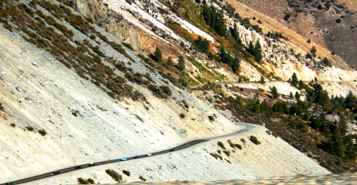 |
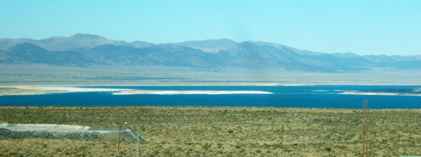 | And so back to Mono
Lake. I keep trying to photograph this lake and keep failing. I guess you
just have to catch the weather and the light exactly right. Then perhaps
there won't be so much haze in the atmosphere. |
| So we turned south to carry on where we had left off. We were
heading for Death Valley but Mammoth Lakes was as far as we would make
tonight. | 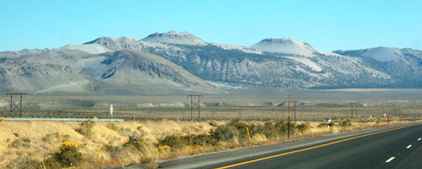 |
|